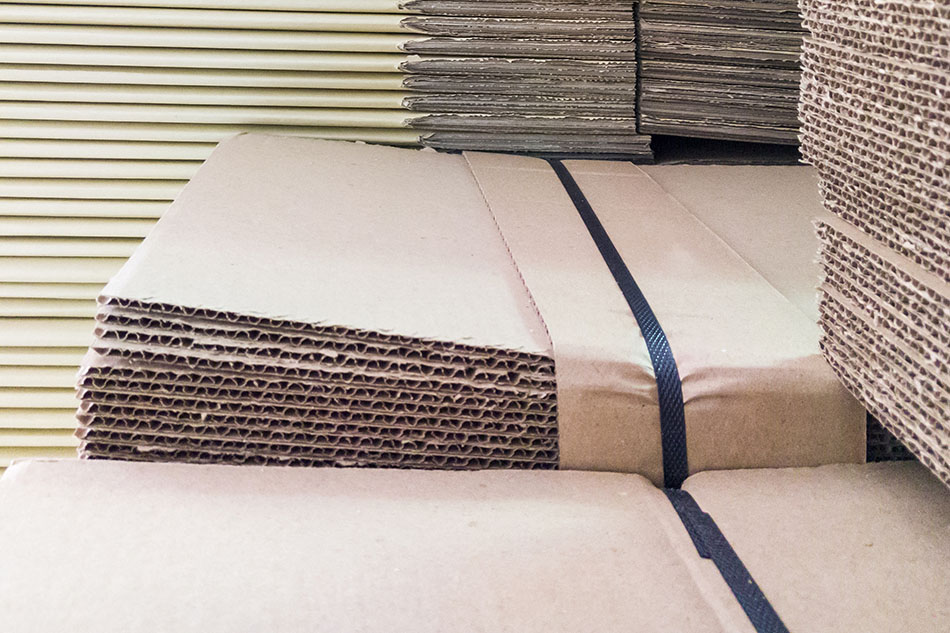
Experts noted that lower OCC generation and higher demand is driving up recycled fiber prices. | Trainman111/Shutterstock
Containerboard, cartonboard and tissue markets appear primed for growth in the years ahead, experts say. That spells good news for recycled paper prices, which have been on a slow climb over the last half year.
Panelists talked through factors guiding the current North American recovered paper market during a recent discussion hosted by the Institute of Scrap Recycling Industries (ISRI) trade association and the Davis Index, a material pricing index that reports recovered commodity values.
“We have good market fundamentals for long-term growth, for the key segments that consume recycled paper grades, which is really encouraging and something to look forward to,” said Jose Gonzalez, director at AFRY Management Consulting, which provides market research.
Corrugated boxes and cartons drive packaging market
Packaging demand will contribute to what AFRY projects will be 77 million short tons of global recovered fiber demand increase from 2020 through 2035.
Gonzalez projected demand for corrugated boxes in the first quarter of 2024 will be better than it was during that period a year earlier. That’s already visible in moves by packaging producers to increase their stock of boxes, suggesting “demand will start picking up this year,” he said.
For cartonboard, Gonzalez noted signs of a positive first quarter of 2024, compared to both the same period a year earlier and compared to the last few months. Those factors include resiliency in consumer spending, as well as brand owners looking to meet sustainability initiatives.
“These are good ingredients for cartonboard also to perform well in the first quarter of 2024,” Gonzalez said.
In the tissue market, also a significant sector for recovered fiber feedstock, demand is “back on track to the pre-pandemic levels,” Gonzalez said, especially in the away-from-home markets. That’s driven by Americans traveling and going out to restaurants at higher levels again.
Gonzalez added that after some mills idled paper machines or even closed facilities altogether during the COVID-19 pandemic, demand growth in markets – including tissue – is leading some fiber end users to invest in these areas once again.
He pointed to a recycled paper mill in Duluth, Minnesota, that was closed by Verso Corporation in 2020 early in the pandemic. Verso had been producing both graphic and packaging paper products at the mill. In 2021, the shuttered facility was purchased by ST Paper & Tissue, a mill operator with facilities in Virginia and Wisconsin. ST Paper restarted the mill in 2023, producing tissue, paper towels and napkins from post-consumer recycled paper converted on an Andritz paper machine.
Then, in January 2024, Italian paper company Sofidel Group purchased the Duluth mill, which has a current capacity of 72,000 short tons per year and has 80 employees. In announcing the purchase, Sofidel said the recycled paper mill helps the company meet the “growing demand” for tissue, “which saw a significant upturn in 2023.”
Examining OCC’s march upward
U.S. average OCC prices tanked in late 2022, plummeting from $131 per ton in July 2022 to $29 per ton by the end of the year, according to RecyclingMarkets.net. But the tide shifted in recent months: OCC steadily increased in the latter part of 2023 and continued upward early this year, hitting $87 per ton in January.
Demand growth is one part of the OCC pricing equation, but it doesn’t tell the whole story.
“Obviously, the prices have firmed up,” said Leonard Zeid, president of the paper brokerage division at Midland Davis. “But unfortunately it’s firming up because of lack of supply of material.”
Generation of OCC in the recycling stream is down, he said. Collection has been softening in certain areas of the country, and that’s something of a delayed result of an earlier drop in corrugated box demand, leading mills and box plants to slow down.
“They’re making less boxes because people are buying less things,” Zeid said. “[When] they’re buying less things, there’s less scrap in the stream. Less scrap in the stream, there’s less generation.”
That creates a struggle for mills to get enough recovered fiber to meet flat demand levels, let alone when box demand starts to rise again. Zeid noted the containerboard mills are projecting sales to increase in the near future, although not to reach pre-pandemic levels quite yet. So as they look to meet that demand, constrained feedstock is driving prices higher, and it will take time to get OCC collection back where it needs to be to meet that demand.
“The containerboard business has firmed up a little bit, but there’s going to be a lag in the pipeline,” Zeid said. “Until they’re making boxes that are out in the market, there’s a three-month lag at least between the time that happens and the time it gets to the recycling stream.”
Prices will continue to push upwards during that lag time, and likely further as long as demand continues to rise.
“If that happens, we’re great,” Zeid said. “If it doesn’t, if you start seeing some downtime by the mills, then we may see some collapse in the [OCC] market.”

